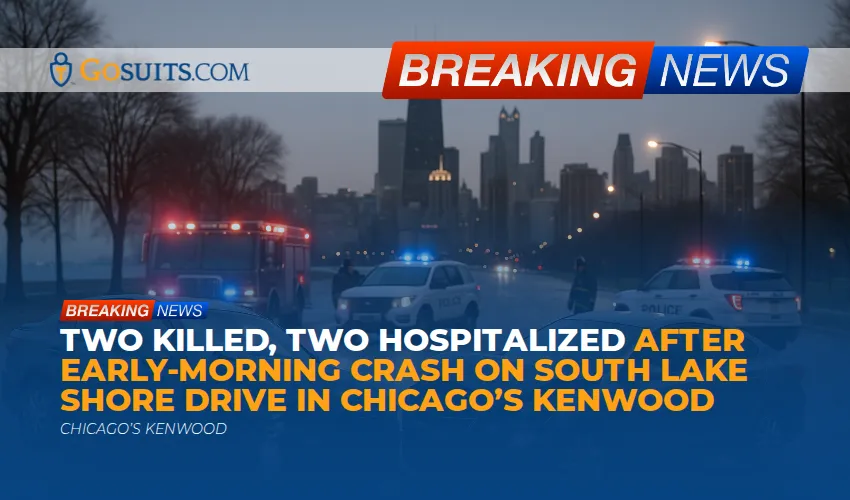- What are “stacking” and “anti-stacking” in auto insurance?
- Does California allow stacking of UM/UIM (uninsured/underinsured motorist) coverage?
- How does California Insurance Code section 11580.2 affect UM/UIM stacking?
- When can you stack UM/UIM coverage in California and when can you not?
- How do stacking rules in California compare to Texas, Illinois, and federal law?
- How do stacking issues affect plaintiffs and defendants in civil auto injury cases?
- What steps should you take after a crash if you think stacking applies to your claim?
- How can a car accident attorney help with stacking and UM/UIM disputes?
- What if my policy has an anti-stacking clause—can I challenge it?
- How much can stacking change the total amount available to recover?
- How can GoSuits help with stacking and your California auto insurance claim?
- Resources
What are “stacking” and “anti-stacking” in auto insurance?
You may see the terms “stacking” or “anti-stacking” on auto insurance when your policy includes uninsured motorist (UM) or underinsured motorist (UIM) coverage. In plain terms:
- Stacking means combining the UM/UIM limits from more than one policy or more than one insured vehicle so the injured person has a larger pool of UM/UIM funds after a crash where the at-fault driver’s insurance is absent or insufficient.
- Anti-stacking clauses are policy provisions that prevent combining limits from multiple vehicles or policies, which can limit the amount available under UM/UIM after a crash.
These are contract issues controlled largely by state law and by the exact policy language. For a primer on uninsured and underinsured motorist coverage, see the Legal Information Institute’s overview of uninsured motorist coverage.
Source: Legal Information Institute, Uninsured Motorist

Does California allow stacking of UM/UIM (uninsured/underinsured motorist) coverage?
California law requires insurers to offer UM and UIM coverages, but stacking outcomes depend on contract language and how the parties handled the required offers and rejections. California Insurance Code section 11580.2 governs required UM/UIM coverage and how it may be offered or rejected. Whether you can stack depends on multiple factors, including how the coverages were purchased and whether an anti-stacking clause is valid in your situation.
For the statutory requirement to offer UM/UIM in California, see California Insurance Code § 11580.2 on the official legislative site.
Source: California Insurance Code § 11580.2
How does California Insurance Code section 11580.2 affect UM/UIM stacking?
Section 11580.2 makes uninsured and underinsured motorist coverage part of how insurers deal with liability exposure in auto policies in California. The statutory text includes requirements about offers and the option to reject coverage in writing. Courts interpret the statute alongside contract language when deciding stacking disputes.
If UM/UIM was properly offered and either accepted or validly rejected, the policy language about whether limits are ‘per vehicle,’ ‘per person,’ or aggregate will factor into stacking disputes. Courts look at whether the policy language is clear and whether the insured person had an opportunity to make an informed choice.
Source: California Insurance Code § 11580.2
When can you stack UM/UIM coverage in California and when can you not?
There is no single answer that fits every situation. Stacking in California commonly hinges on these issues:
- Whether you have separate policies: If you or household members have separate auto policies that each include UM/UIM, stacking may be possible if the policies do not bar stacking and the law applicable to those policies allows it.
- Whether a single policy insures multiple vehicles: Many policies state limits apply “per vehicle” or “per person.” Whether you can stack limits from two vehicles insured under the same policy depends on the policy wording and case law construing that wording.
- Whether you signed a valid rejection or selection form: California law requires insurers to offer UM/UIM and allows the insured to reject or choose limits in writing. A clear waiver or election can prevent stacking if the statutory requirements were followed.
- Whether a contractual anti-stacking clause is valid: Courts will enforce an anti-stacking clause if it is clear and consistent with statutory requirements.
Because these issues involve contract interpretation and procedural facts (what forms were signed, how the policies were sold), claimants often need document review and legal advocacy to determine whether stacking applies in a particular matter.

How do stacking rules in California compare to Texas, Illinois, and federal law?
Auto insurance regulation and stacking law are matters of state law. There is no uniform federal stacking rule. Here are broad, comparative points:
- Federal law: Federal law does not set rules for stacking. Auto insurance, including UM/UIM coverages and stacking issues, is regulated by states. See the National Association of Insurance Commissioners for background on state regulation of insurance.
- Texas: Texas law permits anti-stacking provisions in many contexts if the clause is clearly stated and the insured had an opportunity to reject or select coverage. Policy language, statutory forms, and the Texas Insurance Code and case law control. For Texas-specific practice and forms, the Texas Department of Insurance and Texas statutes are primary sources for analysis.
- Illinois: Illinois courts have their own line of cases addressing stacking and the enforceability of anti-stacking clauses. As in California and Texas, results depend on policy wording and whether the insured properly elected or waived coverage.
For all three states, the best practice is to examine the exact policy language, the signed selection/rejection documents, and the controlling state statute and case law. Because outcomes depend on state-specific statutes and judicial decisions, an attorney familiar with that state’s insurance law is usually needed to evaluate stacking claims.
Source for state-based regulatory framework: National Association of Insurance Commissioners (NAIC)
How do stacking issues affect plaintiffs and defendants in civil auto injury cases?
Stacking can be dispositive for how much money is potentially available after a crash. Here is how stacking questions affect both sides in civil UM/UIM cases:
How does stacking help a plaintiff?
- More available coverage: If stacking is allowed, the injured party may access combined limits from multiple policies or multiple insured vehicles, which may significantly increase recovery above the at-fault driver’s liability limits.
- Better settlement leverage: A larger potential insured pool often improves settlement leverage and may reduce the need to litigate against a single low-limit tortfeasor.

How does stacking help a defendant insurer or at-fault driver?
- Limits exposure: Anti-stacking clauses reduce the aggregate funds a claimant can access from UM/UIM policies, limiting insurer exposure and possibly reducing liability settlements or verdict pressures.
- Defense strategies: Insurers may assert anti-stacking clauses or challenge the validity of claimed stackable policies to reduce payout amounts, often creating contested factual and legal disputes.
Both plaintiffs and defendants must approach stacking disputes as mixed issues of fact and law. Document review, witness testimony about the procurement of insurance, and judicial interpretation of policy language commonly shape case outcomes.
What steps should you take after a crash if you think stacking applies to your claim?
After a collision where the other driver has no or inadequate insurance, consider these steps promptly:
- Preserve your insurance documents: Keep a copy of your declarations pages, the full policy contract(s), and any signed rejection or election forms related to UM/UIM.
- Notify your insurer in writing: Report the claim according to your policy to preserve UM/UIM rights and deadlines.
- Gather evidence: Collect the police report, medical records, billing, and photos that document your losses and the other driver’s fault or lack of insurance.
- Talk to a lawyer before signing releases: Many settlement forms contain language that can waive potential stacking claims. Do not sign away rights without consultation.
Because stacking disputes turn on policy language and procedural steps (for example, whether the UM/UIM offer or waiver was valid), early legal review improves the chance you preserve and present the claim properly.
How can a car accident attorney help with stacking and UM/UIM disputes?
An attorney’s role in stacking disputes typically includes:
- Document review: Examining your policies, signed election or rejection forms, and declarations pages to identify stacking arguments.
- Claims negotiation: Preparing and presenting demands that account for all potentially stackable coverage.
- Litigation: Filing suit and litigating coverage disputes when insurers refuse to honor stacking claims or deny coverage.
- Coordination with medical and economic evidence: Developing damages evidence so insurers and courts can see the full extent of losses tied to available insurance limits.
Because stacking issues require both legal argument and factual proof about how coverage was purchased and applied, legal representation helps protect your claim and avoid procedural missteps that could defeat stacking claims.
What if my policy has an anti-stacking clause—can I challenge it?
You may be able to challenge an anti-stacking clause, but success depends on facts and state law. Common challenge points include whether:
- The anti-stacking clause is ambiguous: Courts in many states construe ambiguous insurance provisions in favor of the insured.
- The insurer complied with statutory offer and rejection procedures: If the insurer failed to make the required written offer or the insured did not execute a valid rejection, courts may refuse to enforce an anti-stacking clause.
- Policy procurement details reveal problems: If the insured can show that the coverage choices were not adequately explained or the paperwork was defective, a court may allow stacking.
Because these issues involve contract interpretation and regulatory compliance, analyzing the written policy and the procurement record is essential. If you believe an anti-stacking clause was not validly imposed, an attorney can evaluate the documents and advise on next steps.
How much can stacking change the total amount available to recover?
The impact of stacking varies by case. Examples of scenarios show the difference:
- Single policy per vehicle, no stacking: If you have 1 vehicle with $50,000 UM limits and no stacking, you generally have $50,000 available under UM/UIM.
- Two vehicles, stacking allowed: If you have two vehicles each with $50,000 UM limits and stacking is allowed, you might access $100,000 total in UM/UIM coverage depending on policy terms and state law.
- Multiple household policies: If household members each carry separate UM/UIM policies without anti-stacking clauses, stacking could multiply available limits substantially.
Stacking may change whether an injured person can be fully compensated for medical bills, lost wages, and pain and suffering when the tortfeasor’s liability limits are too low. Exact outcomes depend on coverage structure and judicial rulings.

How can GoSuits help with stacking and your California auto insurance claim?
If your question is whether California allows stacking or how stacking affects your civil claim after a crash, a free consultation with a personal injury attorney can help you understand the coverage options available and the legal steps to pursue full compensation. During a consultation, an attorney can:
- Review your insurance documents to identify all potential UM/UIM sources, any signed election or rejection forms, and any anti-stacking clauses
- Explain what stacking could mean for your recovery based on the policies and the facts of your accident
- Outline the claims and litigation timeline including notice requirements, deadlines, and any immediate actions you should take to preserve rights
About GoSuits and how we help in stacking and UM/UIM matters
GoSuits is a plaintiff-focused personal injury law firm that assists people injured in car crashes across California, Texas, and Illinois. We handle complex insurance coverage matters including UM/UIM and stacking disputes alongside claims against at-fault drivers. We work to present the full scope of damages and to maximize the insurance resources available to our clients.
Our services and how we add value
- What we provide: Case intake and investigation, insurance and policy analysis, demand and negotiation with insurers, preparation and filing of lawsuits when necessary, discovery and motion practice, trial representation when needed, and coordination with medical and economic professionals to document damages.
- Our strength: We combine litigation experience and a client-centered approach to develop claims that account for stackable coverage and to challenge anti-stacking defenses when applicable. We handle complex matters including catastrophic injuries and multi-policy coverage disputes.
- Our uniqueness: We are not a volume firm. We use a proprietary case-management system built for personal injury workflow to move cases efficiently from investigation through demand, negotiation, and litigation.
Availability and communication
- Available 24/7: You can call us any time for an immediate free consultation. We have attorneys and staff at our locations ready to help 24/7.
- Multilingual service: We provide multilingual customer service, including 24/7 Spanish and Farsi speakers.
Fee policies and cost transparency
- No win, No Attorney Fees — see our policy at https://gosuits.com/knowledge-base/no-fee-lawyers-unless-you-win/
- No hidden administrative fees: We provide clear fee agreements and transparent statements about case costs and what we will advance during litigation.
Tools and workflow that help your claim
- Proprietary personal injury software: Our in-house system helps us work faster and more thoroughly than firms that do not use dedicated PI workflow tools. That allows us to investigate, prepare demand, negotiate, and litigate more efficiently so insurance companies cannot hide or delay critical information.
Experience and track record
- 30 years of combined experience
- Litigated over 1,000 cases with settlement and verdict results published at https://gosuits.com/prior-cases
- Complex case experience: In cases such as product liability, 18-wheeler collisions, brain injury, and spinal injury, we retain appropriate witnesses in the state to support liability and damages where needed.
- Litigation footprint: We litigate severe injury and complex matters in Texas, California, and Illinois.
- Awards:
- #1 Settlements and verdicts across multiple U.S. counties according to TopVerdict
- Top 100 Settlement in Texas
- Sean Chalaki recognized in Top 40 Under 40 by National Trial Lawyers
- Recognized by Best Lawyers in 2023, 2024, 2025
- Super Lawyers since 2021
Community involvement
- Active community participation: We engage with schools, local chambers of commerce, and local nonprofit foundations.
- Professional service: Our attorneys serve on boards and are members of trial lawyer organizations and consumer-rights groups.
Nearest offices and immediate help
GoSuits maintains offices in jurisdictions where we commonly handle stacking and UM/UIM disputes. In each location we have attorneys and supporting staff prepared to start an immediate review and to provide a free consultation 24/7.
If you believe stacking may apply to your claim, call us immediately so we can review your insurance paperwork and advise on preserving your rights.






